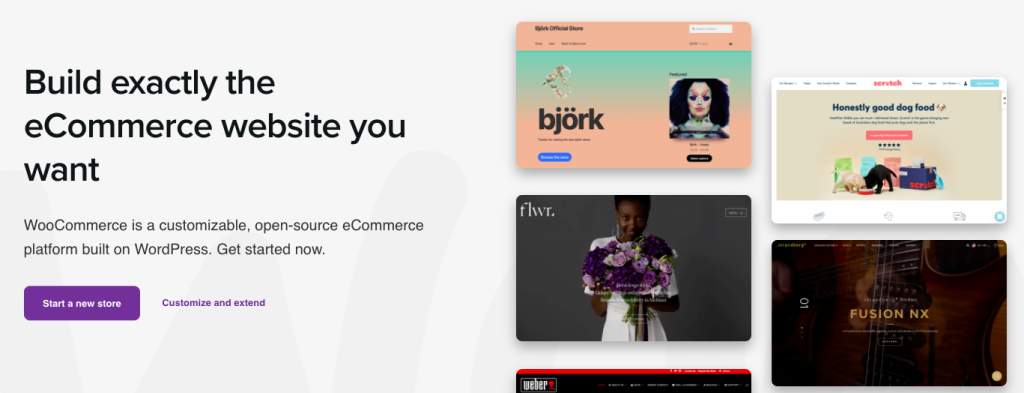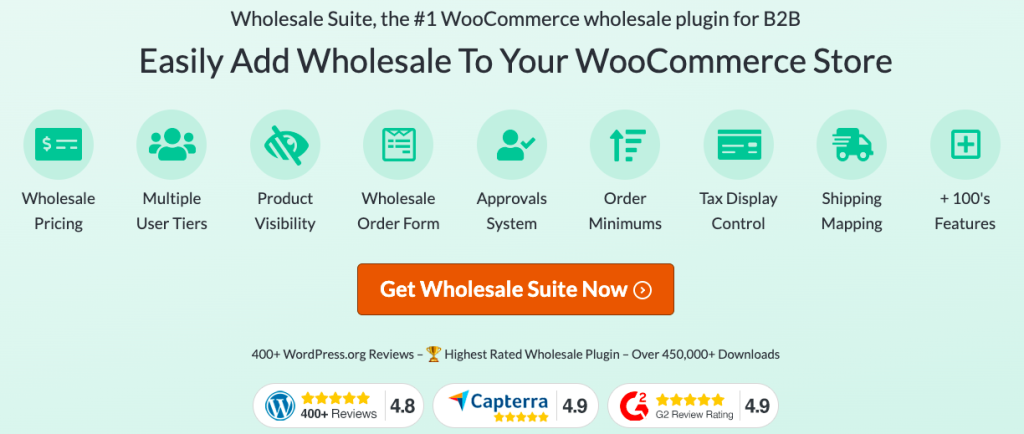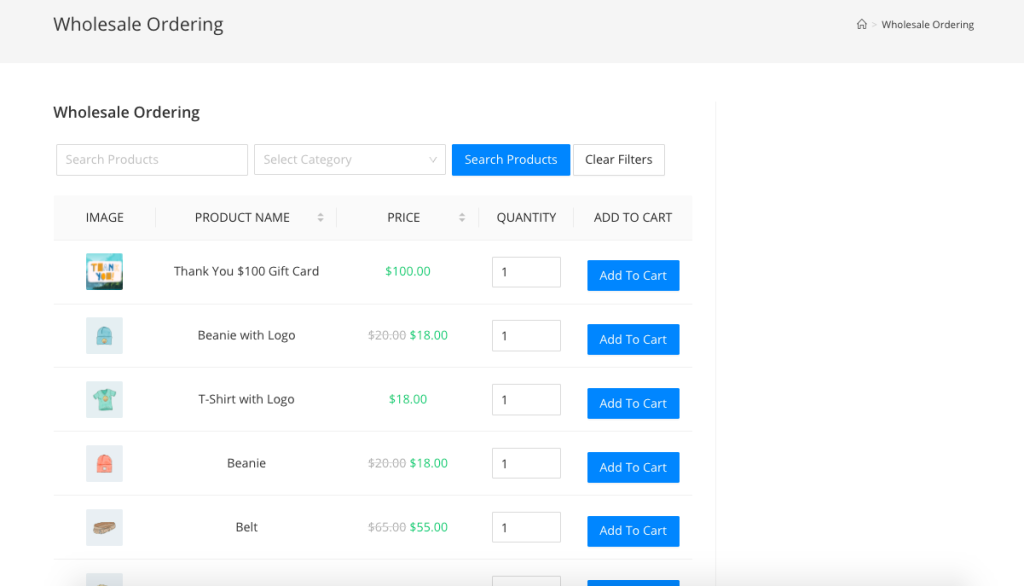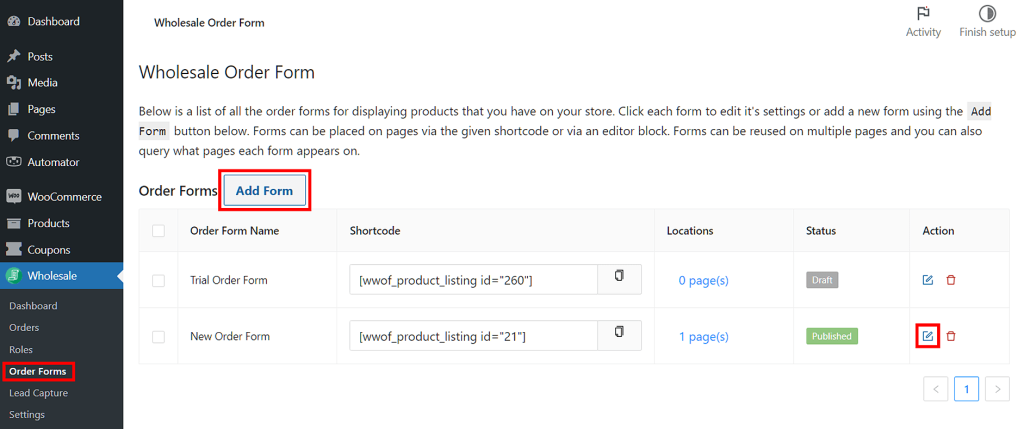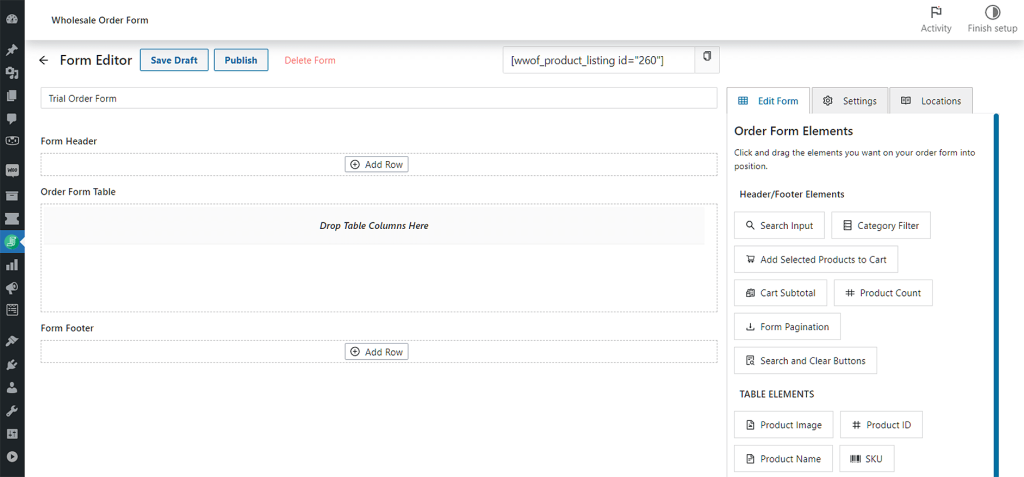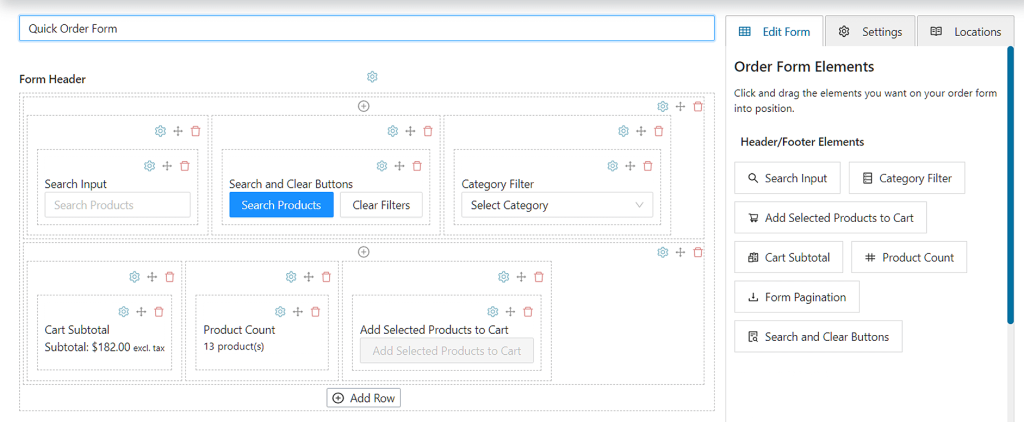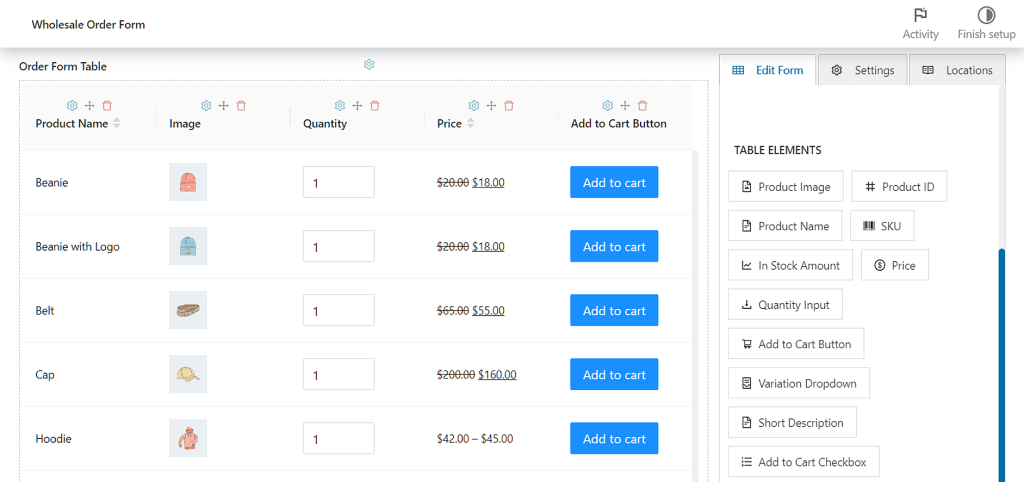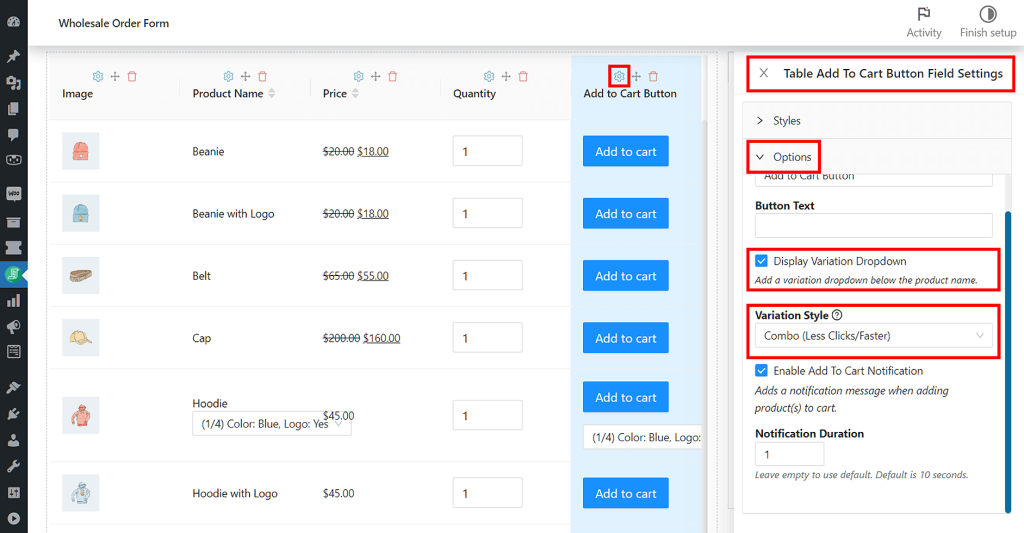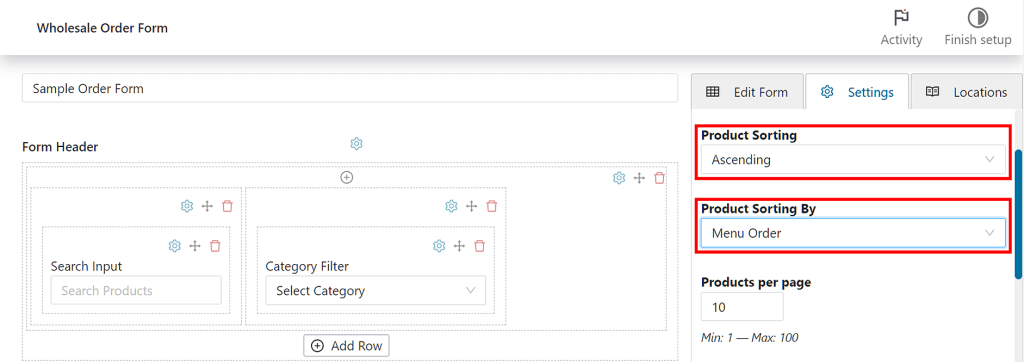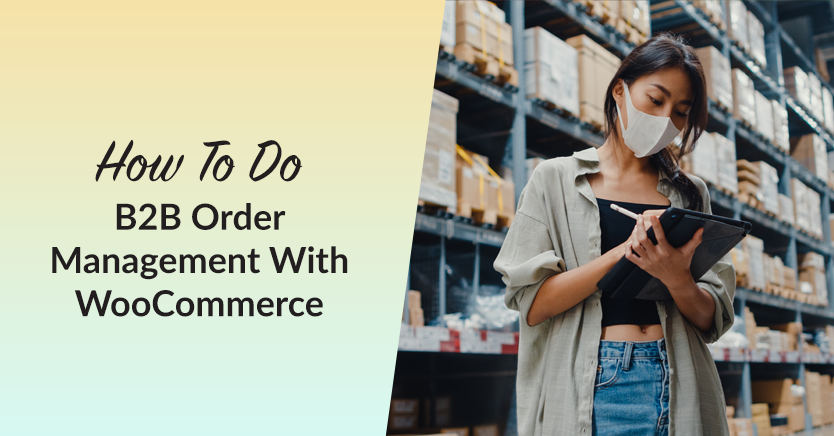
The majority of WooCommerce B2B buyers today are accustomed to having all-order data in the palm of their hands. Therefore, if you want to keep up with the trends of today’s market, it’s critical that you streamline your B2B order management system.
Ever experienced your inventory running out too frequently? Perhaps your customers gripe about how difficult your present system is to use? Yet, even if your B2B business doesn’t exhibit any of these flaws, there are numerous reasons to examine and improve your order management system.
In this article, we’ll discuss how you can use WooCommerce to manage B2B orders successfully. In addition, we’ll walk you through some of the practical reasons why it’s high time for you, as an owner, to invest in your store’s order forms.
What Is B2B E-Commerce?
B2B e-commerce is one of the most rapidly expanding sales channels today.
In 2020, the worldwide B2B market was worth more than $14.9 trillion, or five times greater than the B2C market. Furthermore, according to Forrester, B2B e-commerce will account for 17% of all B2B sales in the United States by 2023, totaling $1.8 trillion.
B2B e-commerce is, without a doubt, hitting new heights. It no longer serves as a trendy new channel that is in its development or exploration stage. Therefore, as a WooCommerce store owner, it is essential to fully understand what a B2B business is and how it works.
B2B e-commerce is defined as the process of marketing and selling products between two businesses. So, in theory, this business model is a distinct strategy from B2C, as it involves selling directly to existing businesses rather than end consumers.
There are several types of B2B e-commerce today, and you likely fall into one of the following categories:
- B2B2C or Business-To-Business-To-Consumer
- Wholesale
- Manufacturers
- Distributors
These business models work in different ways. They do, however, have one thing in common: the intricacy of B2B orders.
What is B2B Order Management?

B2B order management is the practice of tracking and managing the fulfillment procedures for orders placed by your interaction with customers. It entails keeping track of each individual order and managing pertinent consumer information.
On the other hand, any platform, tool, or software that is used to centralize and track orders, inventory levels, and shipments is known as an order management system.
There are five basic types of order management systems:
- Your online store’s back-end
- Spreadsheets
- Order management software that works independently
- Software for enterprise resource planning (ERP)
- Platforms for retail and B2B activities
Although most fledgling B2B businesses pick between spreadsheets and the backend to manage sales, this isn’t a long-term viable option. This is because if you start processing more than 100 orders per day, you’ll want and need a more automated system to keep up with the demand.
What Are B2B Orders And Why Are They Challenging To Manage?
B2B e-commerce orders are typically more complicated than B2C online purchases. These are, therefore, more difficult to manage.
Apart from the fact that they frequently have a higher client acquisition cost, B2B buying cycles are substantially getting longer and more complex. In fact, according to Blue Corona’s report, 77% of buyers today are conducting a more detailed ROI analysis before making a purchase decision.
This means that store owners must now consider ways to make ordering from their stores pleasant, quick, and seamless so that customers are not easily put off.
Of course, these aren’t the only factors to consider. B2B buyers also want and require flexibility in how they order and pay.
Matter of fact, almost three-quarters of B2B purchasers said they’d switch to a new e-commerce site for improved purchasing possibilities. The same proportion of people said they would buy more things if they could pay by invoice.
What Are The Benefits of B2B Order Management?
When you’re running this kind of business model, you can’t afford to overlook your clients’ entire purchasing experience. Again, B2B buyers are notoriously picky.
Hence, if you are not meeting their standards, you risk not only chargebacks and cancellations but also the chance of earning bad online reviews. This will definitely hurt your company’s brand and profitability.
Let’s have a look at the major benefits that a B2B Order Management System provides:
- It improves inventory management
- Order accuracy results in cost savings
- It guarantees customer satisfaction through proper order tracking
- You’ll be able to automate various time-consuming activities like order allocation, fulfillment, etc.
In a nutshell, a sophisticated B2B order management system allows you to get orders out the door and into the hands of your customers much more quickly and at a lower cost.
How To Do B2B Order Management With WooCommerce
Take note that not all e-commerce platforms have the same functionality, and only a handful are suitable for wholesale businesses. But, lucky for you, we’ve been in the industry long enough to know how to manage B2B orders best.
WooCommerce is the world’s most popular e-commerce plugin for WordPress, catering to about 99 percent of all WordPress stores today. This is due to the fact that this plugin streamlines the process of setting up and running an online business.
WooCommerce + Wholesale Suite
WooCommerce does, however, lack one important component: wholesale capabilities.
Because the plugin is designed for retail operations, it will require some tweaking if you wish to use it to set up a wholesale store. Here is where Wholesale Suite can come in handy:
Wholesale Suite is a set of three plugins for wholesalers, each with its own set of features. For order management optimization, you’ll need the Order Form plugin the most.
This is a premium plugin that allows you to create a streamlined wholesale order form that’s much more intuitive than WooCommerce’s default shop pages.
So, if you’re interested in setting up an amazing ordering experience for your wholesale customers in WooCommerce with very little effort, gear up as we’ll show you how you can get started with this plugin in four easy steps:
Step 1: Install and configure your Wholesale Order Form Plugin
When you buy and install our Wholesale Order Form Plugin, it creates a page called “Wholesale Ordering” on your website.
This can be found by default at http://[yoursiteurl]/wholesale-ordering/. This page will then display the default setting of the wholesale order form:
Many e-commerce business owners use it this way right out of the box, and the form will try to blend in with your WordPress theme by default, inheriting any existing styles.
There are, however, a variety of choices for customizing and optimizing your order form, which you can do by following the next steps.
Step 2: Set multiple order forms
The standard wholesale ordering page has been specially built with ordering efficiency in mind for medium-sized e-commerce companies. Because of this, you could only initially have one order form.
However, starting from Wholesale Order Form v2.0, we enhanced this feature so you can now host several order forms.
To do so, navigate to your WordPress dashboard, then click Wholesale > Order Forms. This will take you to the Wholesale Order Form page, which lists all the order forms you’ve created.
To create a new form, click the Add Form button. In the future, you can click an existing order form’s edit button if you ever want to make changes to it.
Step 3: Customize the look of your wholesale order form
After selecting Add Form on the Wholesale Order Form page, you’ll be redirected to the Form Editor page.
We introduced the Form Editor in Wholesale Order Form v2.0. This feature allows you to easily customize the look and behavior of your order forms. For example, it lets you modify your form’s styling, move its elements around, and change how its columns work.
Basically, you’ll customize your form’s Form Header, Form Table, and Form Footer sections by adding rows and columns, with each column containing an element. We illustrate this in the examples below:
If you want to make the changes more precise and personalized for your brand, you can also modify each element’s settings. You can do this by clicking on an element’s gear icon.
Clicking an element’s gear icon gives you access to its configuration and styling options, which appear on the right side of the page.
For example, in the order form illustrated below, we clicked the Add to Cart Button element’s gear icon. This opened up its Field Settings, allowing us to access its Options and its Display Variation Dropdown and Variation Style controls.
For more comprehensive instructions on how to create or edit an order form, check out the following guides:
- A Step-by-Step Guide To WooCommerce Quick Order Forms
- Knowledge Base: WooCommerce Wholesale Order Form Getting Started Guide
- How To Create A Simple Wholesale Order Form Online
Step 4: Start sorting the products visible on your order form
Initially, product sorting on the Wholesale Order Form was controlled by a default parameter. But thanks to the plugin’s drag-and-drop Form Editor, you can now organize the products on the order form independently.
To organize your products, simply go to the rightmost column on the Form Editor page. Then, click the Settings tab and scroll down to Product Sorting and Product Sorting By. These options will let you organize your products in various ways.
For example, you can organize your product list from the latest to the oldest product by setting Product Sorting By to “Sort by Date” and Product Sorting to “Descending.”
You can also allow specific products to be included and excluded in the order form by modifying Settings. For more details on sorting orders in the Wholesale Suite Order Form, check out the in-depth guide here.
Conclusion
One of the most important things to remember when setting up an ordering system is that time is valuable. The faster they can place an order and get back to work, the better. Similarly, the better you manage orders, the more sales you can accommodate.
Therefore, you have to invest in the right B2B order management system that can help you maintain your store’s overall efficiency. In this article, we discussed the steps on how you can do B2B order management in WooCommerce via Wholesale Suite’s Order Form Plugin.
To recap, these steps are:
- Install and configure your Wholesale Order Form Plugin
- Set multiple order forms
- Customize the look of your wholesale order form
- Start sorting the products visible on your order form
Do you have any questions about how to use Wholesale Order Form to build and enhance your B2B order management system? How about our Wholesale Suite Bundle, which boasts wholesale pricing and wholesale registration solutions? Let us know in the comments section below!


